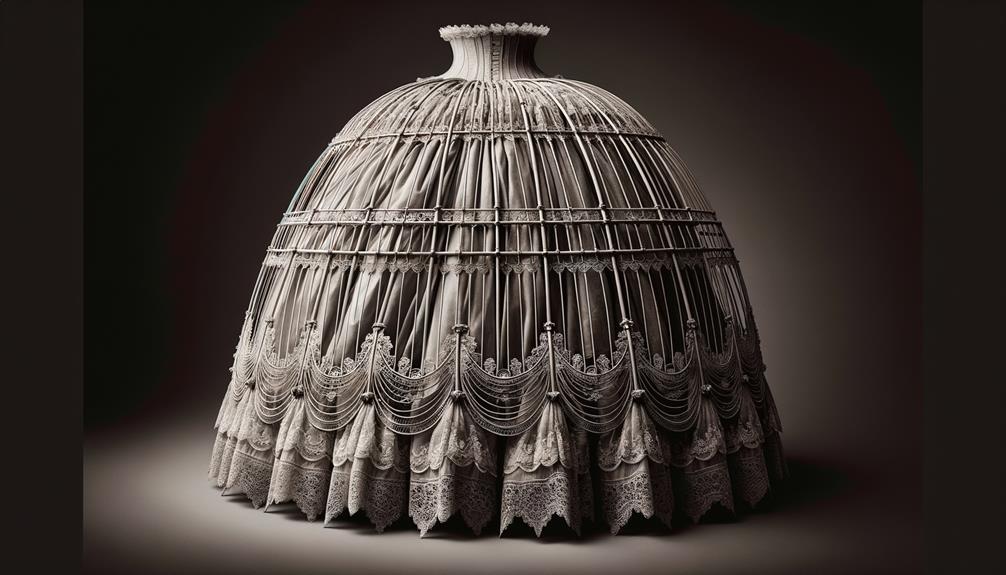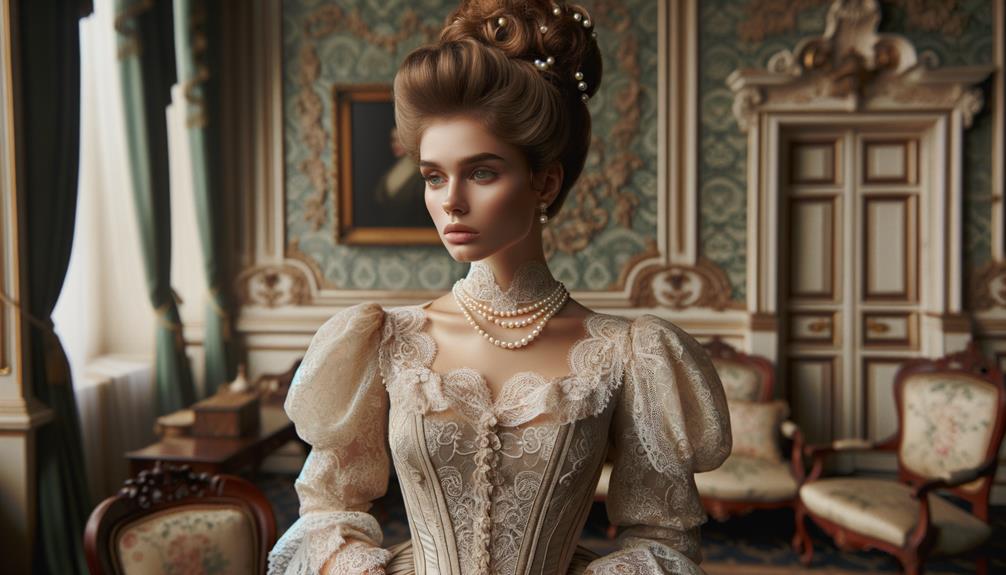When I think of Victorian fashion, bonnets stand out as the ultimate symbol of elegance and social refinement. These exquisite headpieces were more than just a fashion accessory; they conveyed status, taste, and sophistication. Crafted from luxurious materials like silk, velvet, and straw, each bonnet was a masterpiece of intricate design, adorned with delicate ribbons, flowers, and feathers. From daily errands to grand balls, bonnets were a staple in every Victorian lady's wardrobe, exuding refinement and poise. Their intricate craftsmanship reflected a dedication to beauty and function that's rare in modern times. If you're intrigued by the evolution of these iconic headpieces and their lasting influence, there's more to explore.
Evolution of Victorian Bonnets
As I look back on the evolution of Victorian bonnets, I'm struck by how these elegant headpieces not only protected women from the sun but also reflected the intricate social hierarchies and fashion trends of the era. Made of straw, silk, or velvet, the Victorian bonnet was a symbol of practicality intertwined with sophistication. Women of the early Victorian era wore these bonnets not just to shield themselves from the elements but to signal their social standing and adherence to proper etiquette.
The choice of materials, with straw being particularly popular for its lightweight quality, reveals how functionality met fashion. Each bonnet, adorned with ribbons, flowers, and feathers, was a canvas that reflected personal taste and societal norms. The style of hat one chose could subtly convey wealth and status, with more elaborate designs indicating higher social rank. Queen Victoria's own fondness for bonnets certainly contributed to their widespread popularity, cementing their place as essential accessories.
At its core, the Victorian bonnet was more than just a practical garment; it was an emblem of an era, encapsulating the delicate balance between utility and elegance that defined Victorian fashion.
Popular Bonnet Styles
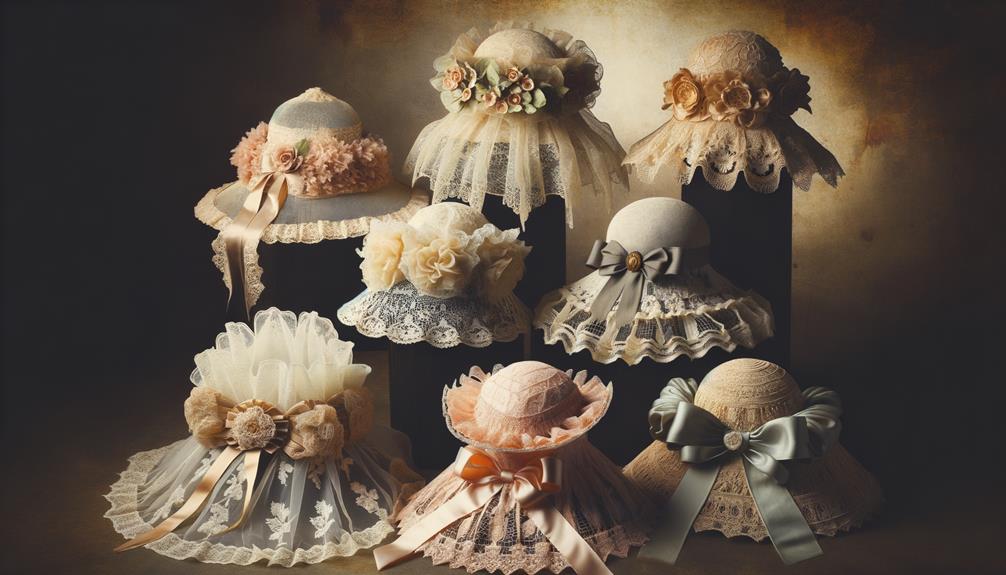
In examining the popular bonnet styles of the Victorian era, I'm struck by how each design encapsulated both the season's demands and the wearer's elegance. During the summer, straw bonnets were a staple for outdoor activities, while silk bonnets added a touch of luxury to special occasions. Velvet bonnets, on the other hand, provided warmth and comfort during the colder months.
These hats weren't just functional; they were intricate works of art. Adorned with ribbons, flowers, and feathers, each bonnet became a canvas for personal expression. Women often had multiple styles in their wardrobe, each carefully chosen for different events and seasons. It wasn't just about protection from the sun or keeping hair tidy – it was a thoughtful blend of practicality and fashion.
The evolution of these bonnet styles mirrored the shifting tides of fashion trends, from simple and practical designs to creations of elaborate beauty. Each bonnet told a story, reflecting an era where sartorial choices spoke volumes. In a world that prized innovation, the Victorian bonnet stands as a testament to timeless elegance and adaptability.
Materials and Craftsmanship
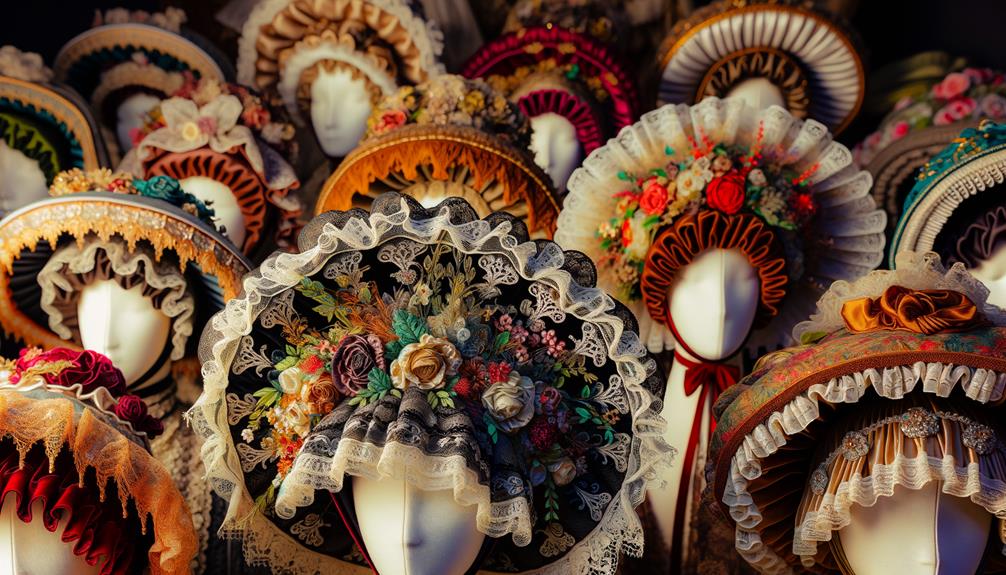
The allure of Victorian bonnets lies in the exquisite materials and meticulous craftsmanship that brought them to life. As I delve deeper into the artistry behind these headpieces, I marvel at the innovative blend of practicality and opulence. Bonnets were more than mere accessories; they were statements of social status and personal expression.
In the Victorian era, the materials used in bonnet-making were as varied as they were luxurious:
Straw hats, ideal for summer, provided both elegance and sun protection.
Silk offered a glossy finish, perfect for formal occasions.
Velvet, rich and sumptuous, was often reserved for cooler weather and evening wear.
Elaborate decorations, such as ribbons, flowers, and feathers, were meticulously added to enhance the bonnet's visual appeal.
The craftsmanship was remarkable. Every bonnet was a labor of love, with artisans dedicating countless hours to ensure each detail was perfect. The intricate decorations showcased the wearer's taste and invited admiration and conversation in social circles. These bonnets stood as proof of the era's dedication to beauty and function.
Bonnet Occasions and Uses
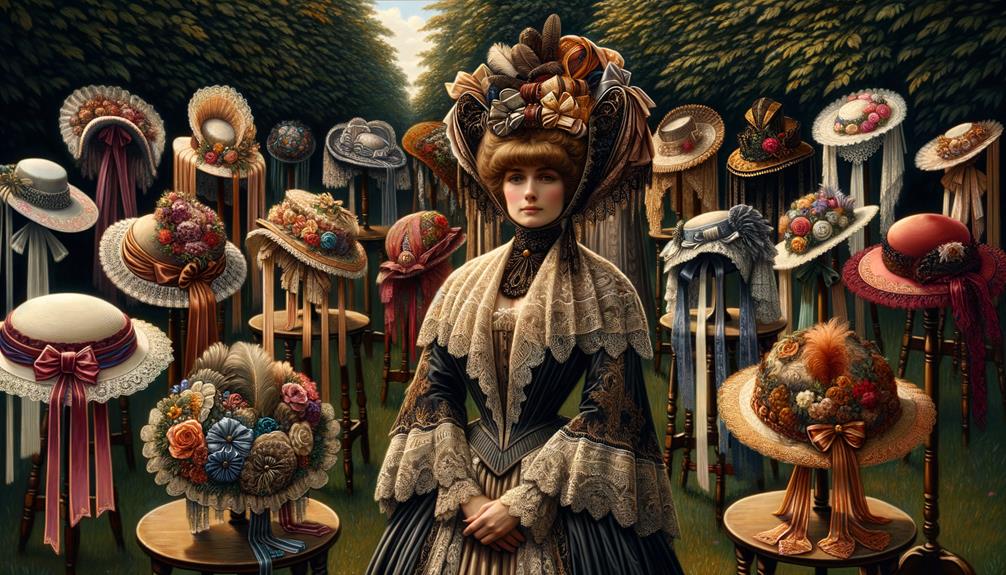
Worn for both practicality and elegance, Victorian bonnets were a staple in women's fashion, gracing a variety of occasions that reflected the wearer's social standing and personal taste. From leisurely outdoor walks to delightful picnics and visits to friends' homes, these beautiful hats were carefully chosen to complement the event and often varied with the seasons.
Indoors, bonnets played a significant role in formal attire, donned at social gatherings and tea parties. It was here that the intricate designs and embellishments of the hats took center stage, showcasing the wearer's sophistication and attention to detail. Each bonnet served a dual purpose: shielding the face from the sun's harsh rays and keeping one's hair impeccably neat.
Women often possessed multiple bonnets, each tailored to specific occasions and levels of formality. Elaborate designs with intricate decorations were reserved for special events, signaling the wearer's esteemed social status. The practicality and elegance of these beautiful hats allowed them to transcend mere fashion, becoming essential elements of a woman's wardrobe, reflecting both her personal taste and societal standing.
Modern Interpretations
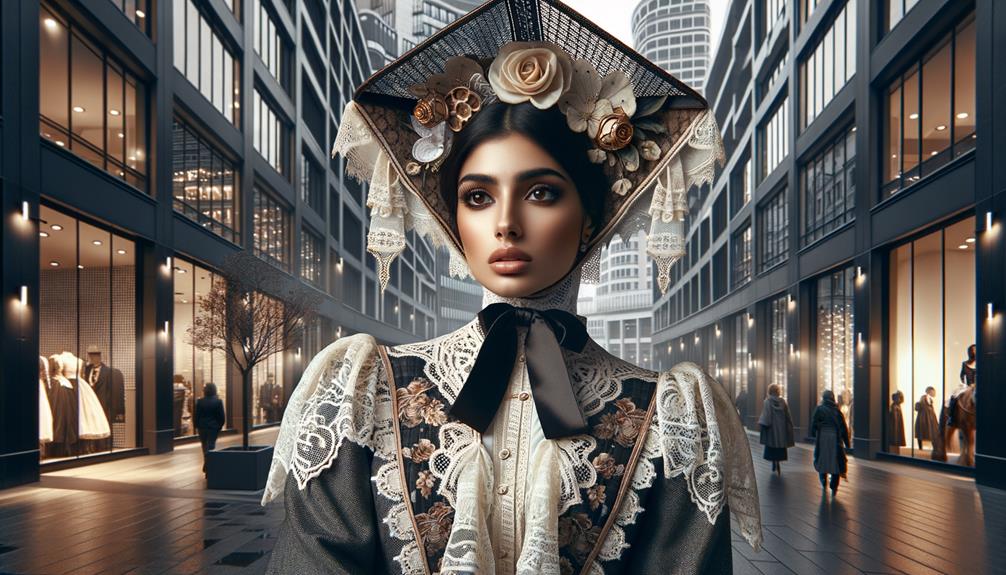
Modern interpretations of Victorian bonnets blend historical elegance with contemporary practicality, creating versatile accessories that appeal to both costume enthusiasts and lovers of vintage fashion. These modern bonnets, often made from durable materials like polyester, offer a comfortable and lasting experience without compromising on style. They're not just a relic of the past but a functional day hat for various occasions.
I've noticed that these bonnets come in a wide range of colors – black, brown, green, and dark red – ensuring there's a shade for every taste. The elaborately decorated designs can transform a simple outfit into a statement piece. What stands out the most are the adjustable ties, allowing for a snug and personalized fit. This feature ensures that the bonnets are as practical as they are beautiful.
Consider the following occasions where these bonnets can be worn:
Cosplay: They're perfect for bringing historical characters to life.
Tea Parties: They add a touch of elegance and vintage charm.
Weddings: They make a unique accessory for brides or guests seeking a timeless look.
Halloween: They're ideal for creating authentic Victorian-era costumes.
These bonnets are more than just headwear; they're a bridge between eras, offering a touch of the past with the convenience of modern design.
Frequently Asked Questions
Why Did Victorians Wear Bonnets?
Victorians wore bonnets to protect their skin from the sun and maintain modesty. These accessories also kept hair tidy and clean, shielding it from pollution. The style and quality of bonnets subtly conveyed social status and personal taste.
What Is the Name of the Victorian Bonnet?
The name of the Victorian bonnet originates from the French word 'bonnet.' During Queen Victoria's reign, this versatile head covering came in various styles, including the elegant poke bonnets and practical coal scuttle bonnets, which effectively combined functionality with elegance.
What Is the Purpose of a Bonnet?
The purpose of a bonnet is multifaceted. It shields my face from the sun, keeps my hair clean and dust-free, and maintains a sense of propriety. Reflecting femininity and modesty, it also subtly conveys my social status and personal style.
What Hats Were Popular in the Victorian Era?
Here's a fascinating fact: during the Victorian era, over 70% of women wore bonnets daily. It's intriguing how these intricately designed hats dominated the fashion scene, symbolizing elegance and modesty, largely thanks to Queen Victoria's influence.



